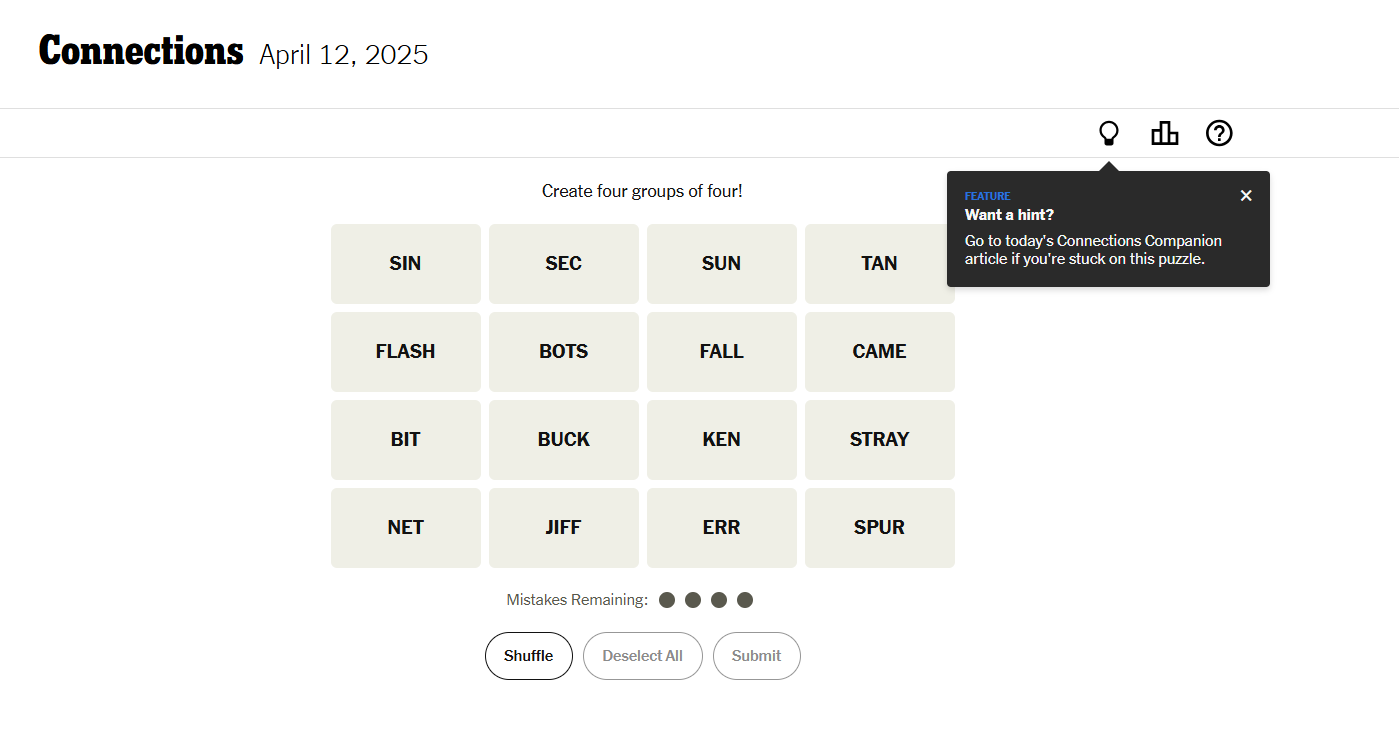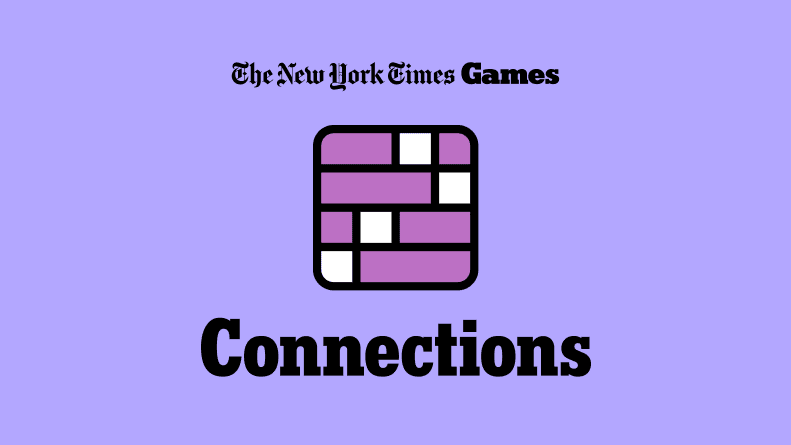NYT Connections is a daily word puzzle game from The New York Times that challenges players to group 16 words into four distinct categories. Each group shares a hidden relationship — whether it’s types of animals, famous surnames, slang, or wordplay. Unlike games that test spelling or definitions, Connections sharpens your categorical thinking and pattern recognition skills.
Launched in 2023 and edited by Wyna Liu, it quickly became a staple in the NYT Games lineup alongside Wordle, Spelling Bee, and Crosswords. Connections stands out for its deceptively simple format that rewards curiosity, lateral thinking, and sometimes a little pop culture knowledge.

https://www.nytimes.com/games/connections
How To Play NYT Connections
- You’re given 16 words
Each day, the game presents a grid of 16 words with no instructions — just the challenge to find the links. - Form 4 groups of 4 related words
You must figure out which four words belong in each of the four hidden categories. - Submit your guesses
If the four selected words form a valid group, the game will lock them in. If not, you’ll get a strike. - You’re allowed 4 mistakes
Make four incorrect guesses and it’s game over. - Win by finding all 4 categories
The game reveals the names of each group when they’re solved or when the game ends.
Understanding the Difficulty System
Each group is color-coded by how tricky it is to figure out:
- 🟨 Yellow: The most straightforward group — usually obvious.
- 🟩 Green: Moderately challenging — slightly less direct.
- 🟦 Blue: More obscure, requiring knowledge or deeper associations.
- 🟪 Purple: The hardest — often involving puns, wordplay, or unexpected twists.
The challenge often lies in “red herrings” — words that could fit multiple categories — and themes that require interpretation rather than recall.
Winning Strategies and Tips
Whether you’re new to Connections or looking to improve your solving streak, here are some strategies that top players use:
🔍 Start With What Stands Out
Begin by scanning the grid for clear categories: colors, months, numbers, or food types often appear in easier puzzles.
🧠 Think Laterally
Many puzzles rely on indirect connections, like:
- Anagrams
- Synonyms
- Double meanings
- Wordplay (e.g., homophones or rhymes)
Don’t get stuck on the most obvious interpretation.
🗂️ Eliminate as You Go
Solving one group simplifies the rest. Lock in easier categories first (yellow/green), then focus on harder ones (blue/purple).
💡 Use Hints Sparingly
While Connections doesn’t natively offer hints, many fans rely on third-party sites for nudge-style help — enough to get back on track without spoiling the fun.
🧩 Practice Makes Patterns
Over time, you’ll start to recognize common themes and word groupings. Many puzzles feature recurring categories (e.g., chess pieces, card games, pop culture references), making it easier to spot trends.
Why People Love It
NYT Connections is more than just a game — it’s a daily ritual and a shared experience. It’s easy to jump into, fun to solve in under 10 minutes, and challenging enough to keep your brain sharp.
Plus, it creates watercooler moments online. Twitter, Reddit, and puzzle forums buzz with players sharing their results, theories, and frustrations. It’s become a cultural touchstone, especially for those who enjoy games that blend intellect with play.
The Rise of Connections as a Cultural Phenomenon
The success of Connections reflects a broader trend in digital word puzzles. While traditional games like crosswords test knowledge, Connections rewards how we think. It invites players into a new kind of puzzle — one that mimics how our brains sort ideas, even when those ideas aren’t obviously linked.
It’s also become increasingly popular on:
- YouTube: where creators walk through daily puzzles and explain logic
- Reddit & Twitter/X: where communities dissect each day’s toughest connections
- Streaming platforms: where viewers solve puzzles live with hosts
- Classrooms: where teachers adapt puzzles for vocabulary development and critical thinking
FAQ: Common Questions About NYT Connections
Can I play past Connections puzzles?
Yes, the NYT Games app and website allow subscribers to access archived puzzles. Some third-party sites also compile historical puzzles and answers for practice.
Is Connections kid-friendly?
It can be! For younger players, simplify the puzzle or use physical word cards. It’s a great tool for developing vocabulary and logic when played collaboratively with guidance.
Is there a strategy for which color to solve first?
Yes. Start with yellow, then move to green. Save blue and purple for last, as they tend to require more abstract thinking or niche knowledge.







